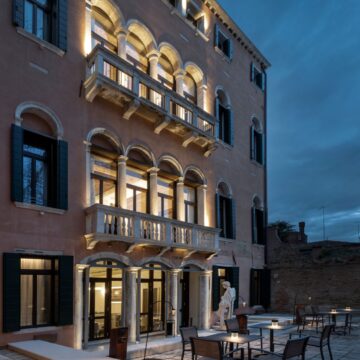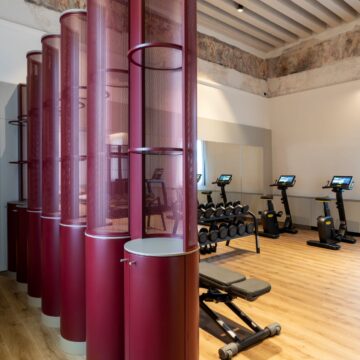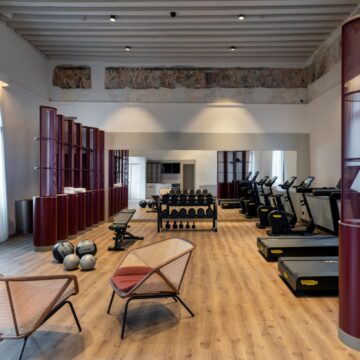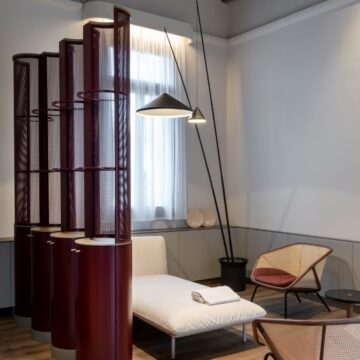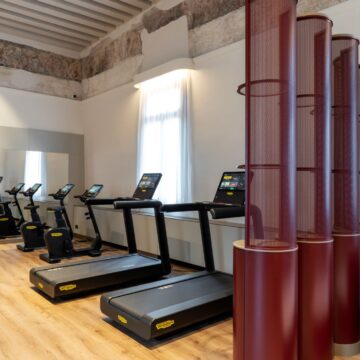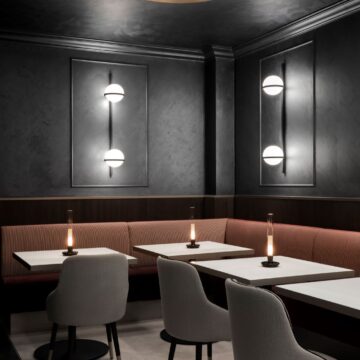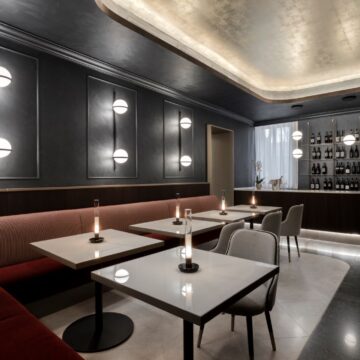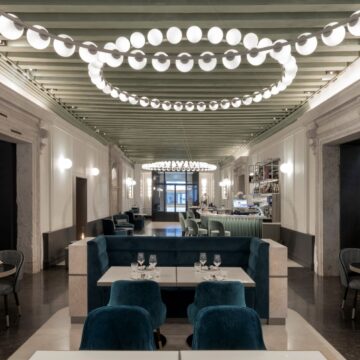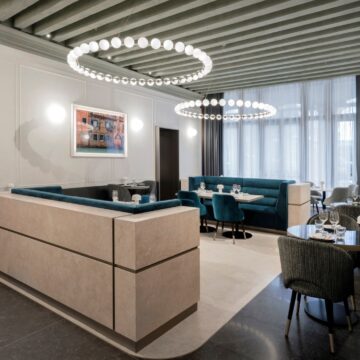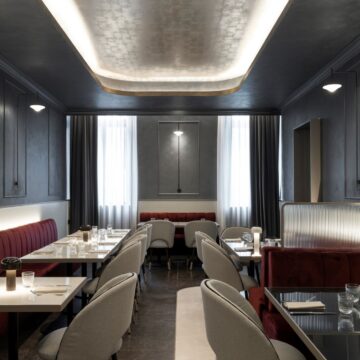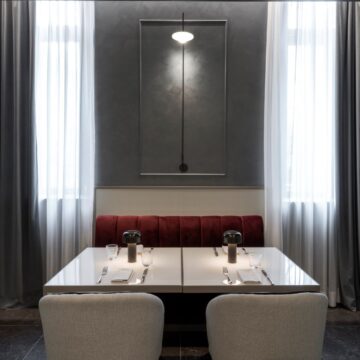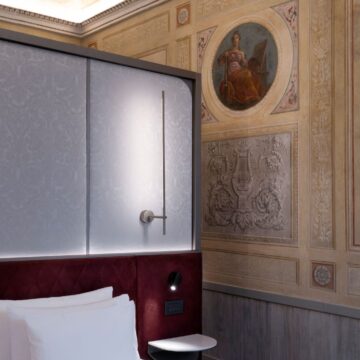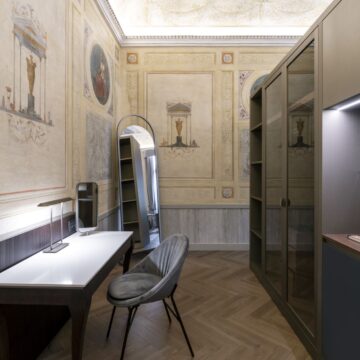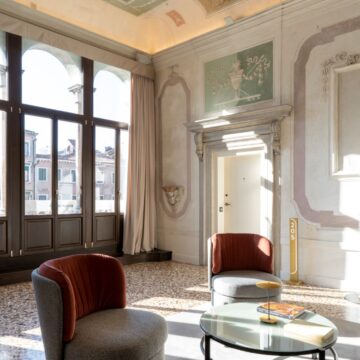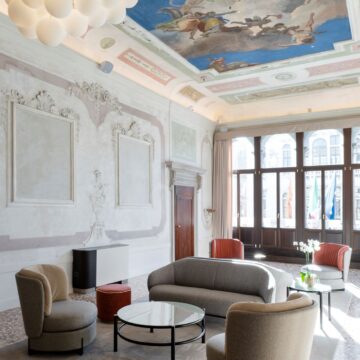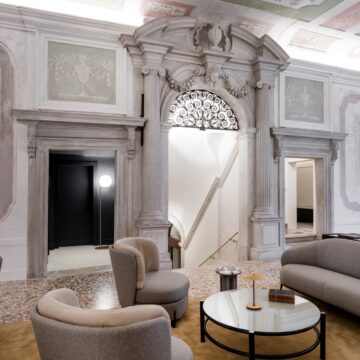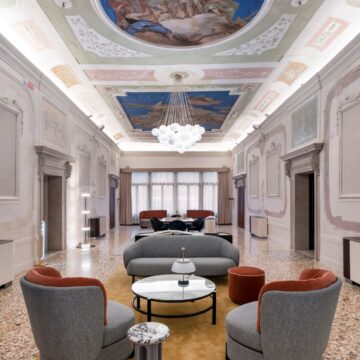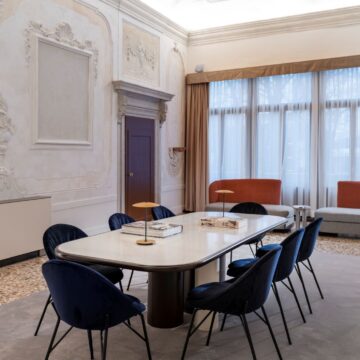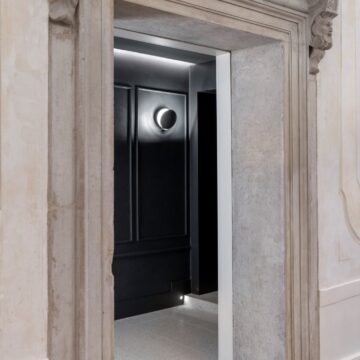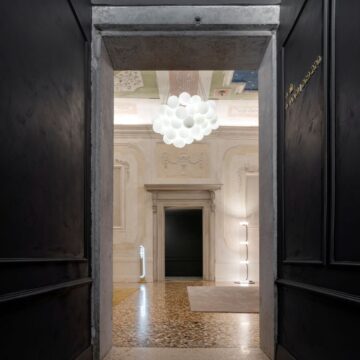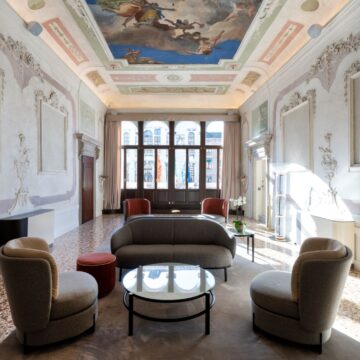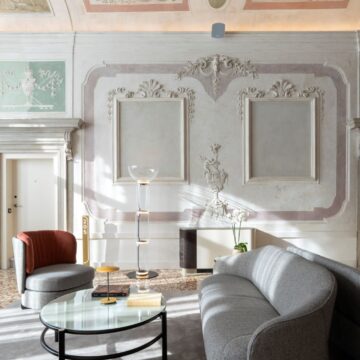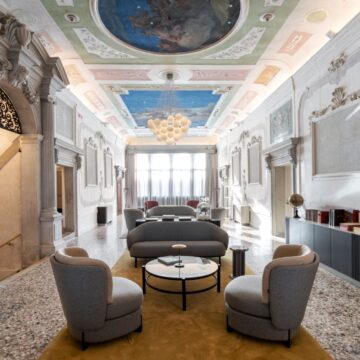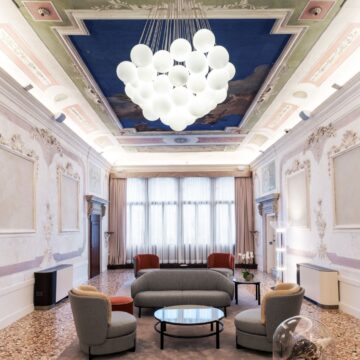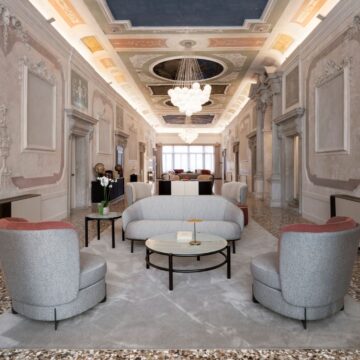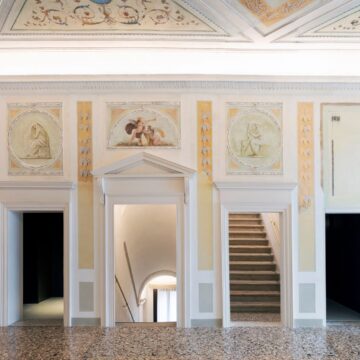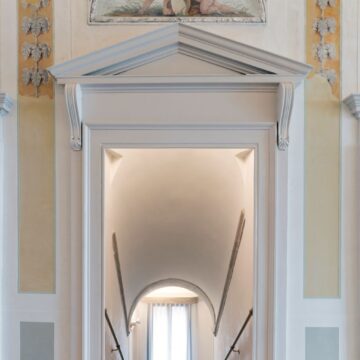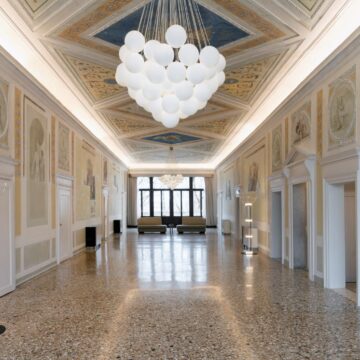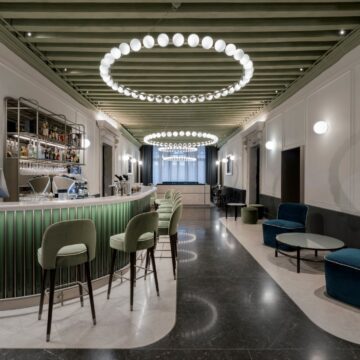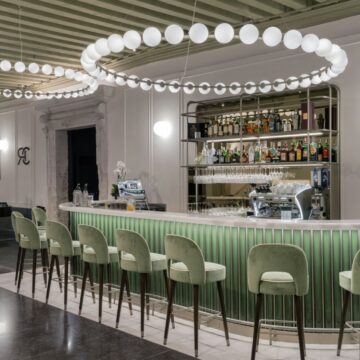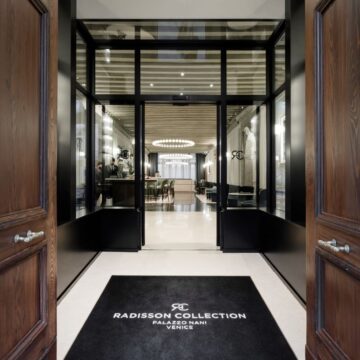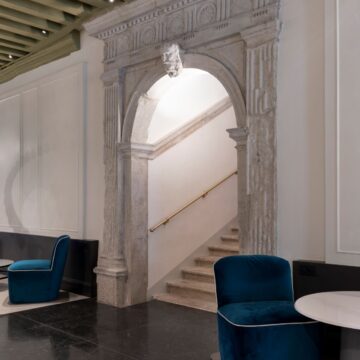The Radisson Collection Hotel Palazzo Nani in Venice is one of the most recent and prestigious realizations by Concreta: it is an ancient Venetian palace located in the heart of the Cannaregio district, a particularly suggestive area of Venice; the Le Guglie ship stop is located right in front of the hotel while the Santa Lucia train station is less than 10 minutes away by feet.
The building that houses the hotel is a sixteenth-century historic building belonged to the ancient family Nani: it was a private residence, an Austrian barracks and, finally, a school; the façade is punctuated by a game of arches and elegant coats of arms in Istrian stone.
Radisson Group wanted to transform this historic residence into an enchanting hotel with 52 rooms and suites and 3 private apartments. Concreta created all the common areas on a project by Studio Marco Piva, according to a “box-in-the-box” furnishing concept aimed at keeping intact the strong historical identity of the building, enriching it with a language of elegant contemporaneity.
Spaces are large and bright, some overlooking the Cannaregio Canal and offer chromatic shades recalling the nuances of the frescoed ceilings, in combination with seats with intense colors that refer to the territory, the colors of the water, the reflections of the glass, the interiors of the “gondolas”.
The realization of the common areas in this project takes on a very particular meaning, as the hotel was conceived as a place of hospitality open to the city and usable by those who wish to enjoy the Restaurant, the enchanting “secret” garden, and the relaxation of the lounge bar and lobbies.
The main entrance of the hotel located on the ground floor houses the console-reception and gives access to the two restaurants and the lounge bar / breakfast room.
For the Private Restaurant, a milky white ribbed glass wall paneling was chosen to give rhythm to the space between the seats, a covering embellished with an integrated backlight. In the main restaurant, the focus point is made up of a sculptural monolith-filter, a large marble bench with upholstered seats in a soft teal velvet. A curvilinear bar counter dominates the scene and follows the floor islands. The covering is a textured carpet of white Venezia marble and Paradigma marble which contrasts it in a darker shade. The chromatic dominant of the spaces is the lagoon-green declined in its various shades.
In the lounge bar – which serves also as breakfast room – very dark colors have been selected running from wall to ceiling to create an immersive, enveloping atmosphere and to emphasize precious custom metal elements – such as the wall bottle holder – with a ribbed dark wood that gives rhythm to the wall, the motif of which is taken up by the striped ruby-colored upholstery that recalls the interior of a gondola.
The two lobbies in the ‘noble halls’ on floors B and C are characterized by being elegantly frescoed spaces, with ‘marmorini’, muses painted in the ovals above the doors of the second floor hall, fresco ceilings with Apollo, Venus and Cupid and Orpheus in Olympus.
The recovered and cleaned historic “seminato” floor was joined by a custom-made mobile furniture designed by Studio Marco Piva, of the same kind but in different colors in dialogue with the colors of the frescoes, with lounge chairs created in collaboration with Natuzzi, alongside tables, work tables and meeting tables always designed by Studio Marco Piva.
The gym, located on floor C, is housed in a frescoed room cleaned with the intervention of a company specializing in the restoration of works of art which has followed the restoration of all decorative elements of the building. The peculiarity of this space consists in the presence of large self-standing cylinders, almost high to the ceiling, handcrafted in metal bent by Concreta and fully equipped, with a high part with decorative and separation function, a base with cabinet function and an original metal mesh designed to separate while maintaining the lightness of a perforated surface crossed by light. Looking ahead, the area will also host a sauna.
The lighting project includes both custom and branded luminaires. The technical lights were created ad hoc in collaboration with Artemide and completed with large circular chandeliers and LED light sculptures from leading brands such as Italamp, Flos and Vibia. The decorative lighting was handled by Concreta: the large chandelier made up of opal glass spheres especially designed for this project stands out.
The opalescence effect crosses the rooms and common areas like a fil-rouge and lights always refer to the transparency and reflections of the glass, and also fabrics play a quite relevant role: most of the fabrics that dress the hotel spaces are produced by Rubelli, a historic and prestigious Venetian brand, while the bright velvets are by Rada Tessuti and the colorful rugs by Besana Carpet Lab play with the textures of the floors and give contrast and movement.
In perspective, even the large 350 square meters garden of the hotel will become a space to be enjoyed with a bar outside and open to the city: in the green, there are sculptures, statues, benches and sofas and two large stone bathtubs recovered during the works.
The official inauguration of the Radisson Collection Hotel Palazzo Nani was organized last February, during the celebrations for the Carnival of Venice.


